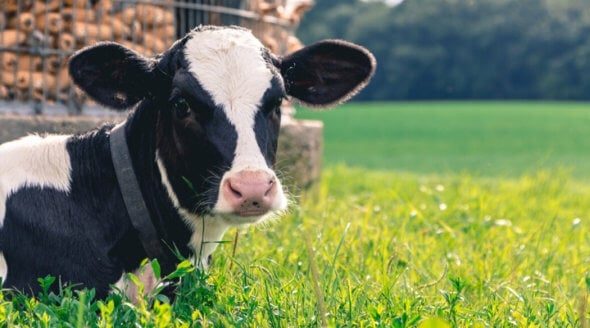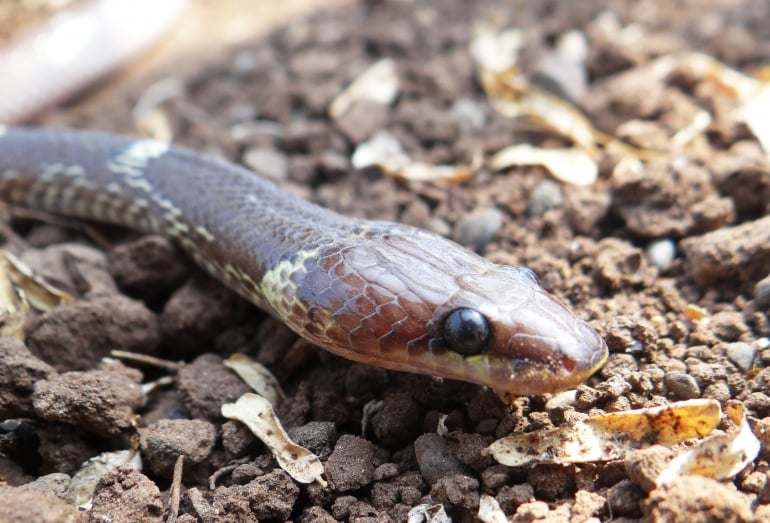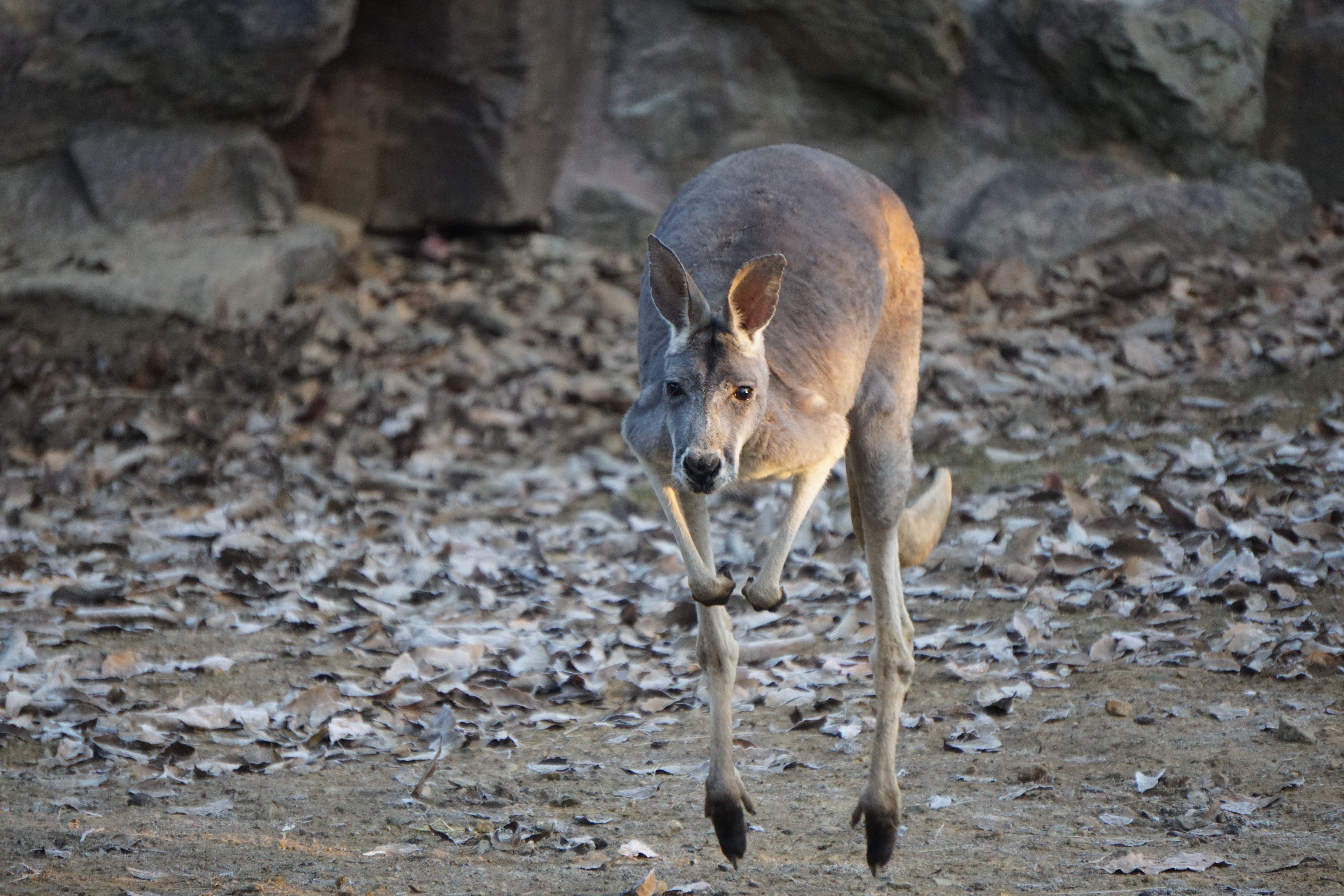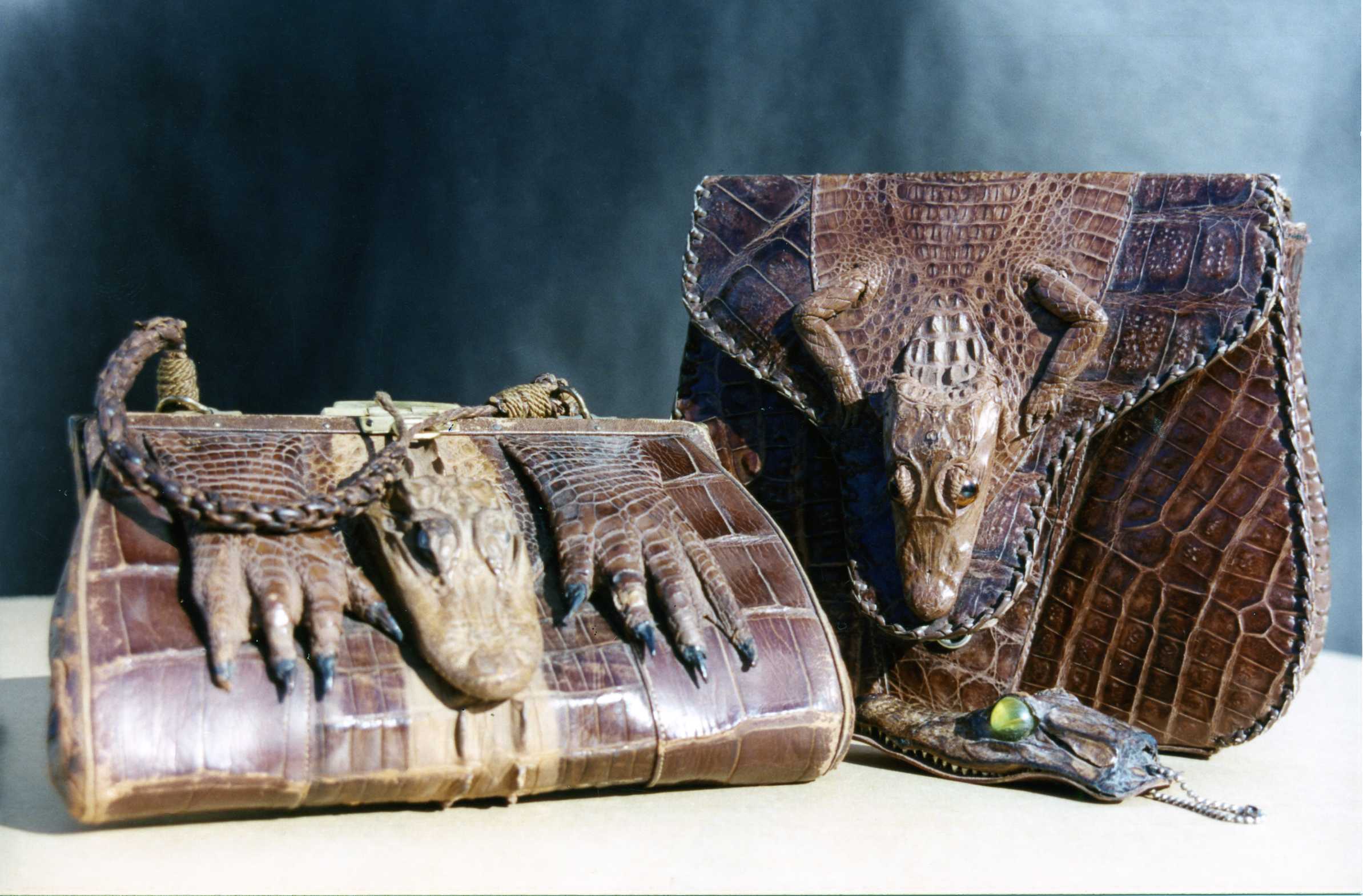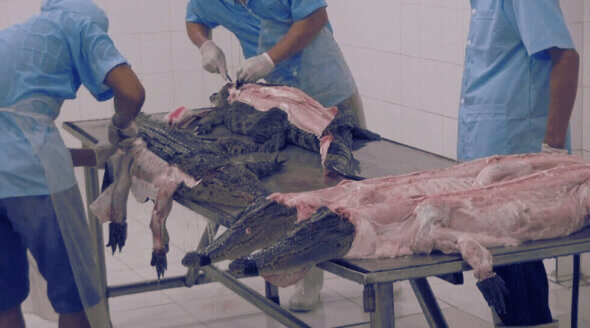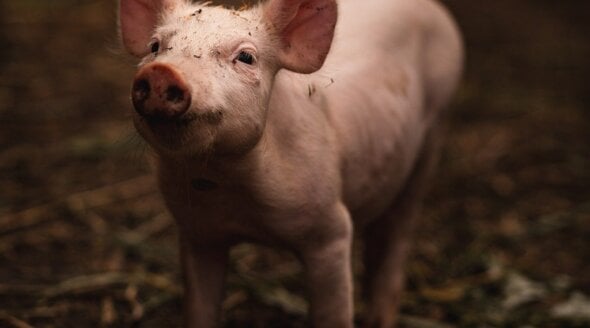Wild-Animal Skins
Some people show no scruples when it comes to turning living, feeling beings into accessories – from crocodiles, alligators, and snakes to “novelty” animals such as ostriches, stingrays, and sharks.
These animals may be poached from the wild or raised on squalid farms, and they’re killed in extremely gruesome, painful ways before being imported to Europe to be used by “luxury” brands. These animals, including reptiles, are sensitive to pain, yet they’re frequently mutilated without any prior stunning or painkillers.
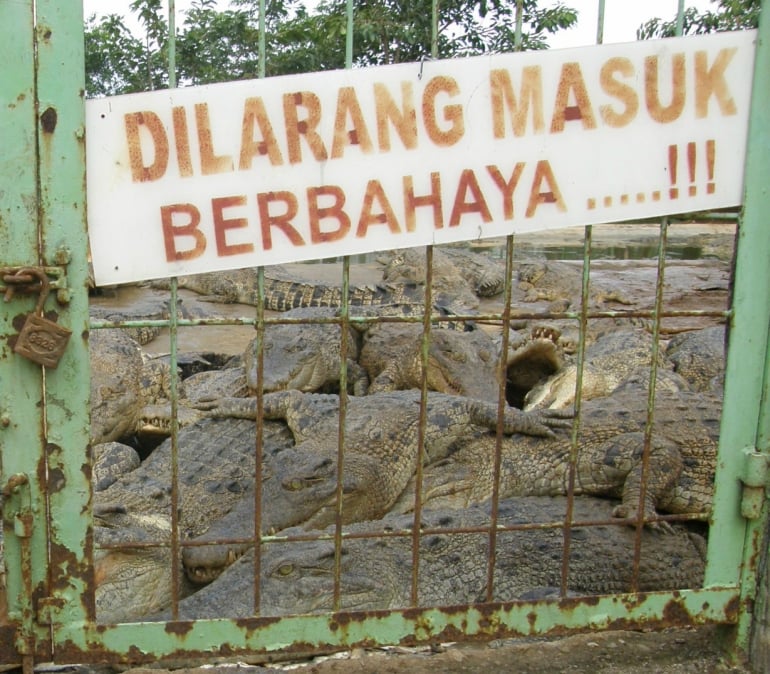
Cold-Blooded Cruelty
Snakes are commonly nailed to trees, and their bodies are cut open from one end to the other as they’re skinned alive because of the belief that live-flaying keeps their skins supple. Their mutilated bodies are then discarded, but because of their slow metabolism, it can take hours or even days for the snakes to die. In some countries, pythons are killed by suffocation: workers seal the snakes’ mouths with a rubber band and then pump them full of air or water. It can take up to 30 minutes for the animals to die.
A PETA Asia investigation into the wild animal–skins trade in Thailand revealed thousands of snakes being bashed on the head with hammers and impaled with hooks while still moving. The two python farms that investigators visited supply skins to Caravel, a tannery owned by Kering – the parent company of Gucci, Saint Laurent, and other brands. Watch the horrifying investigation footage:
Lizards are often decapitated, and sometimes their skin is torn off as they writhe in agony. PETA Asia investigators revealed that workers at an Indonesian abattoir that supplies Gucci with lizard skin tied the animals’ legs together and beheaded them without stunning – causing them a prolonged, agonising death.
Most alligator and crocodile skin comes from farmed animals who were raised in crowded pits with filthy water or small concrete enclosures often narrower than the length of their bodies. The animals are slaughtered in ways that lead to a slow, painful death. Workers may shoot them with a captive-bolt gun or electroshock them, which often fails to render them unconscious, before crudely hacking into their necks and thrusting a metal rod into their heads in an attempt to scramble their brains or down their spine to sever the spinal cord. It can take over an hour for them to die.
PETA US conducted an eyewitness investigation into the wild animal–skins trade and found that live reptiles were sawn open and left to bleed to death on farms that supply skins to Hermès. View the harrowing footage:
“There is no scientific question as to whether alligators are capable of feeling pain and sensitivity to stress—they are.”
– Dr. Clifford Warwick, reptile biology and welfare specialist
Kangaroos are slaughtered by the millions every year, and their skins are often used for football boots. Although the Australian government requires that hunters shoot the animals, orphaned joeys and wounded adults are, according to the government, to be decapitated or hit sharply on the head “to destroy the brain”.
Eels’ necks are cut before they’re gutted, skinned, and decapitated – a process that often causes a prolonged and agonisingly painful death. Stingrays are commonly killed by a spear being stabbed into their head.
Black Market Goods
The illegal trade in wild-animal skins is rampant, and fraud, poor regulation, mislabelling, and a lack of transparency are found throughout the supply chain. For example, an estimated US$1 billion worth of python skins are imported into Europe illegally each year.
In addition, many of the millions of skins exported from Southeast Asia each year are torn from endangered species of reptiles, whose numbers are drastically dwindling in the wild.
There are few laws to protect reptiles from abuse, and those that do exist are often not enforced. For example, although animals such as anacondas and crocodiles are covered by Convention on International Trade in Endangered Species of Wild Fauna and Flora regulations, it’s estimated that for every animal who is legally killed for the wild animals–skins trade, another is poached. This heartless industry is also extremely wasteful – it can take the skin of four crocodiles to make a single bag.
What You Can Do
- Shop compassionately. Top designers and retailers, including Stella McCartney, Topshop, Vivienne Westwood, Adidas, Alexa Chung, Temperley London, H&M, and Roland Mouret, have vowed to steer clear of wild-animal skins. Please join them by always choosing fake snake, mock croc, and other animal-free options. And speak out whenever you see wild-animal skins for sale.
- Share what you’ve learned about the cruel wild animal–skins trade with family and friends to help them make informed, kind choices, too.
- While compassionate brands have dropped wildlife skins, others are still using skin stolen from snakes, crocodiles, alligators, or other animals in their collections. Please tell these brands to choose compassion and stop selling merchandise made from tormented animals:
Exploiting animals for their skin or any other reason is symptomatic of a speciesist belief system – the misguided view that some sentient beings are inferior to others. Help end speciesism by pledging to recognise that animals are not ours to use or abuse and all living, feeling beings deserve to be treated with respect and compassion:

